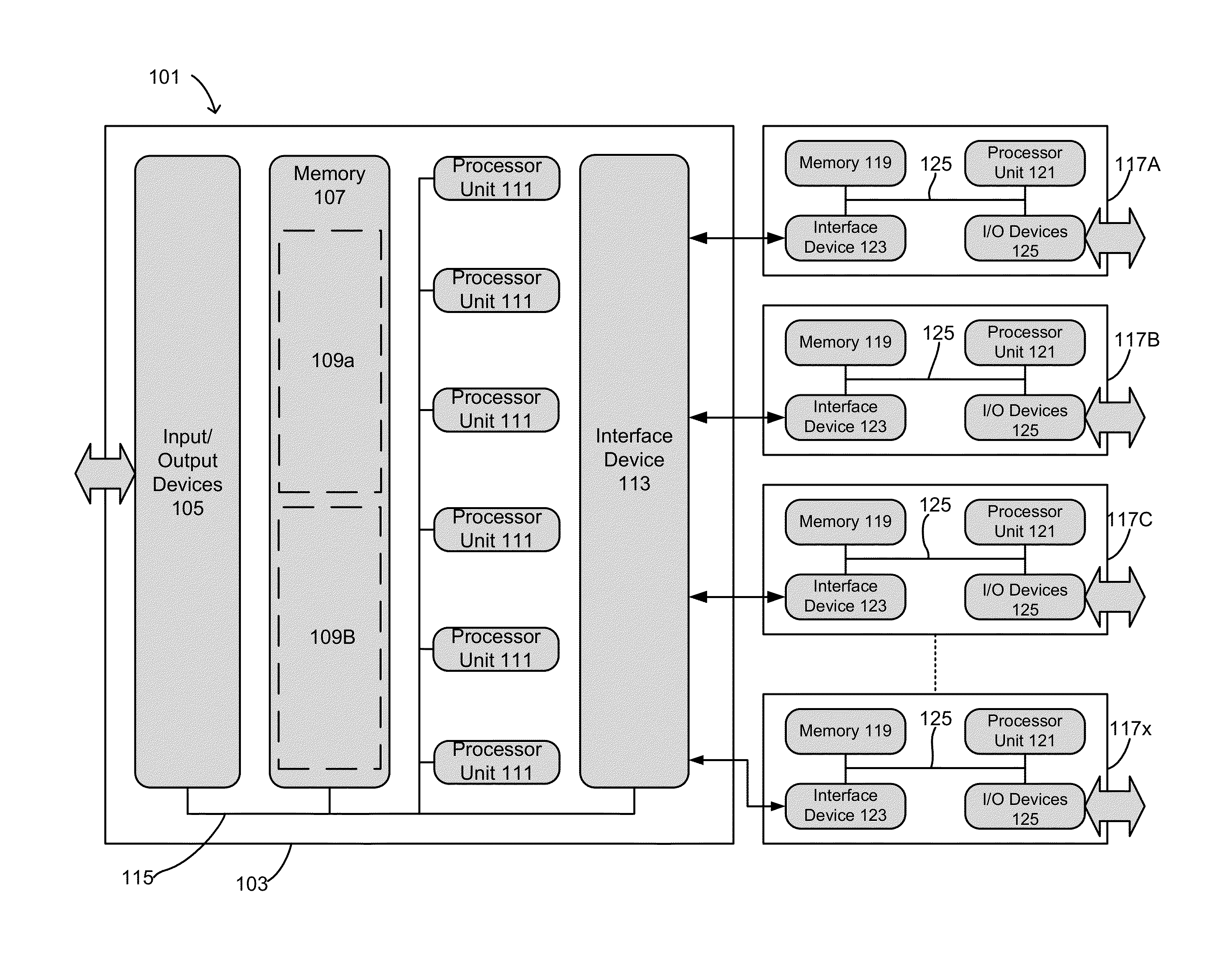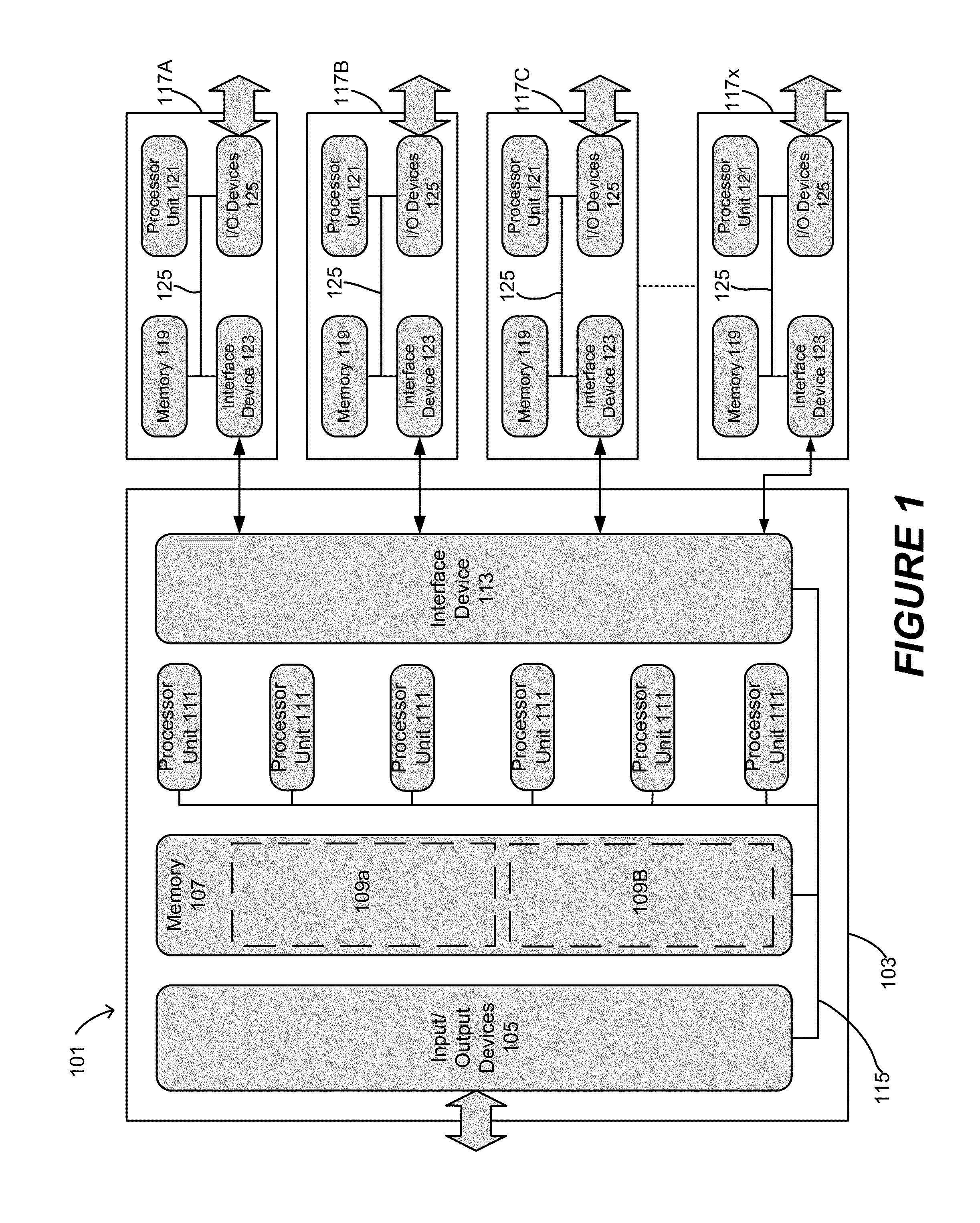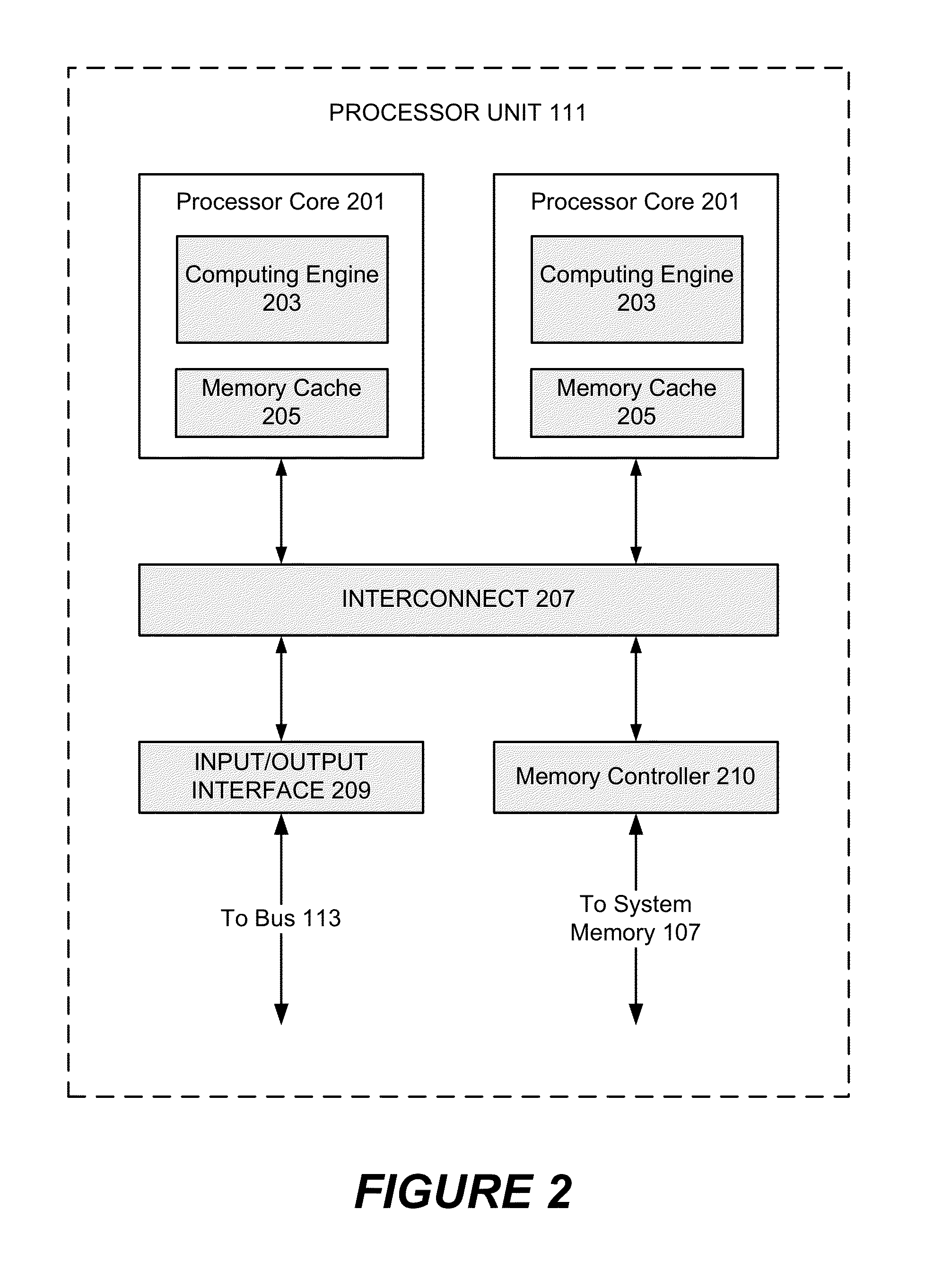Domain Bounding For Symmetric Multiprocessing Systems
a multiprocessing system and domain technology, applied in the field of computing on multiprocessor computer architectures, can solve the problems of inability to exhaustively list specific examples, difficulty in determining what is and is not an embedded system, and disadvantages in some cases of task balancing and workload sharing
- Summary
- Abstract
- Description
- Claims
- Application Information
AI Technical Summary
Benefits of technology
Problems solved by technology
Method used
Image
Examples
Embodiment Construction
[0020]The operations of the disclosed implementations may be described herein in a particular sequential order. However, it should be understood that this manner of description encompasses rearrangements, unless a particular ordering is required by specific language set forth below. For example, operations described sequentially may in some cases be rearranged or performed concurrently. Moreover, for the sake of simplicity, the illustrated flow charts and block diagrams typically do not show the various ways in which particular methods can be used in conjunction with other methods.
[0021]It should also be noted that the detailed description sometimes uses terms like “determine” to describe the disclosed methods. Such terms are often high-level abstractions of the actual operations that are performed. The actual operations that correspond to these terms will often vary depending on the particular implementation, and will be readily discernible by one of ordinary skill in the art.
[0022...
PUM
 Login to View More
Login to View More Abstract
Description
Claims
Application Information
 Login to View More
Login to View More - R&D
- Intellectual Property
- Life Sciences
- Materials
- Tech Scout
- Unparalleled Data Quality
- Higher Quality Content
- 60% Fewer Hallucinations
Browse by: Latest US Patents, China's latest patents, Technical Efficacy Thesaurus, Application Domain, Technology Topic, Popular Technical Reports.
© 2025 PatSnap. All rights reserved.Legal|Privacy policy|Modern Slavery Act Transparency Statement|Sitemap|About US| Contact US: help@patsnap.com



